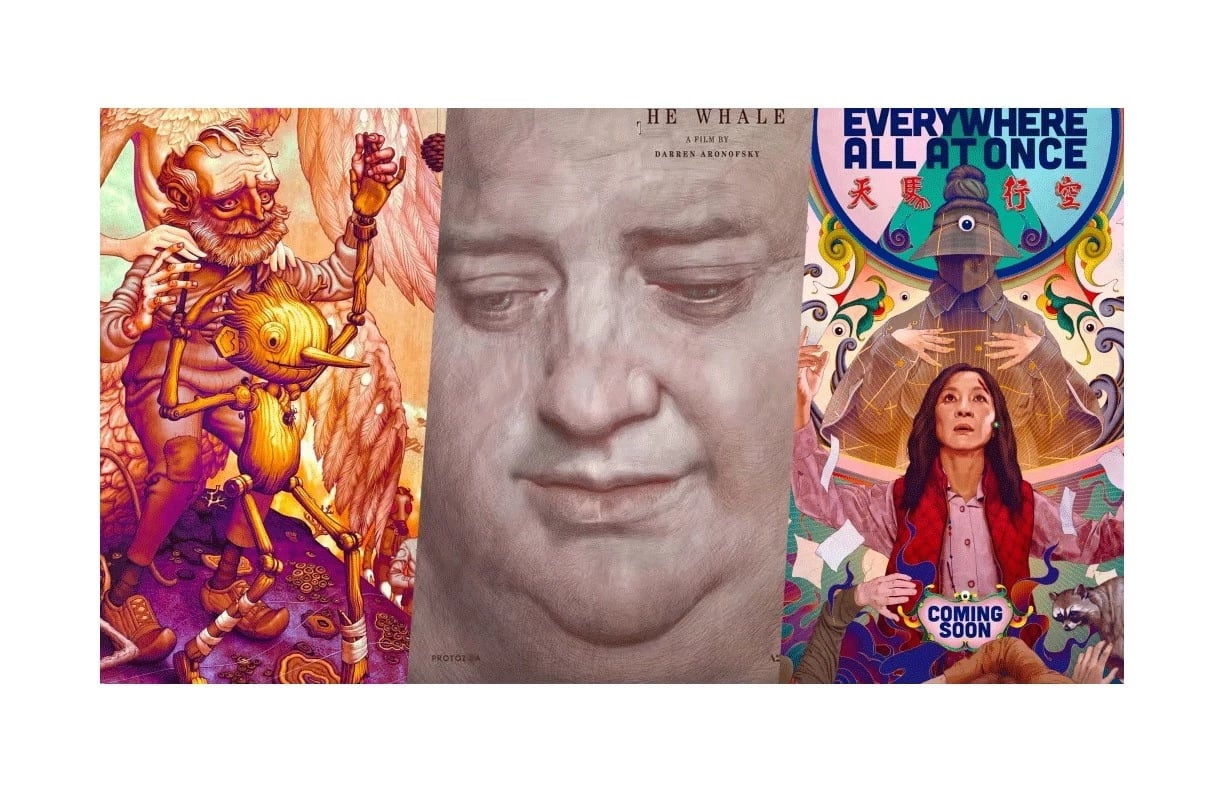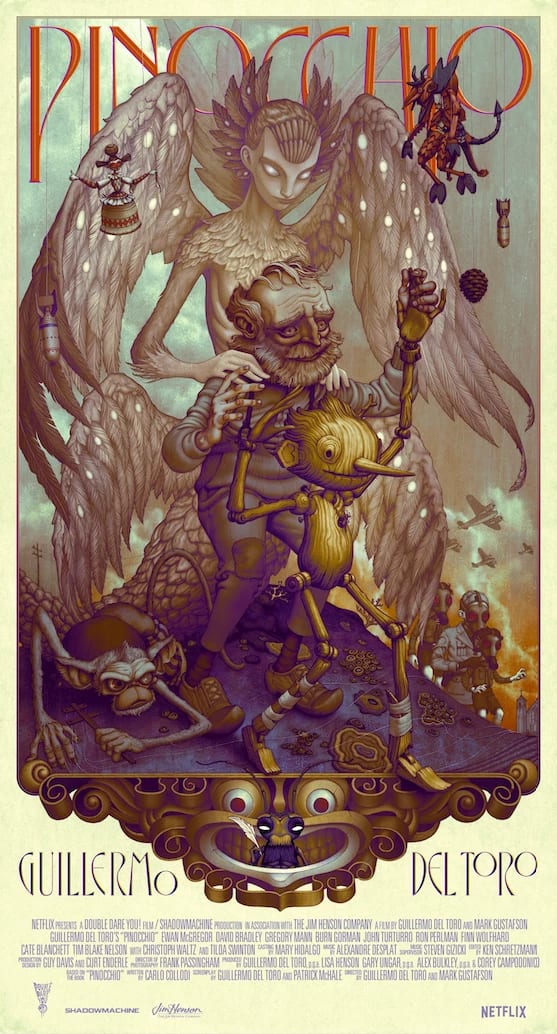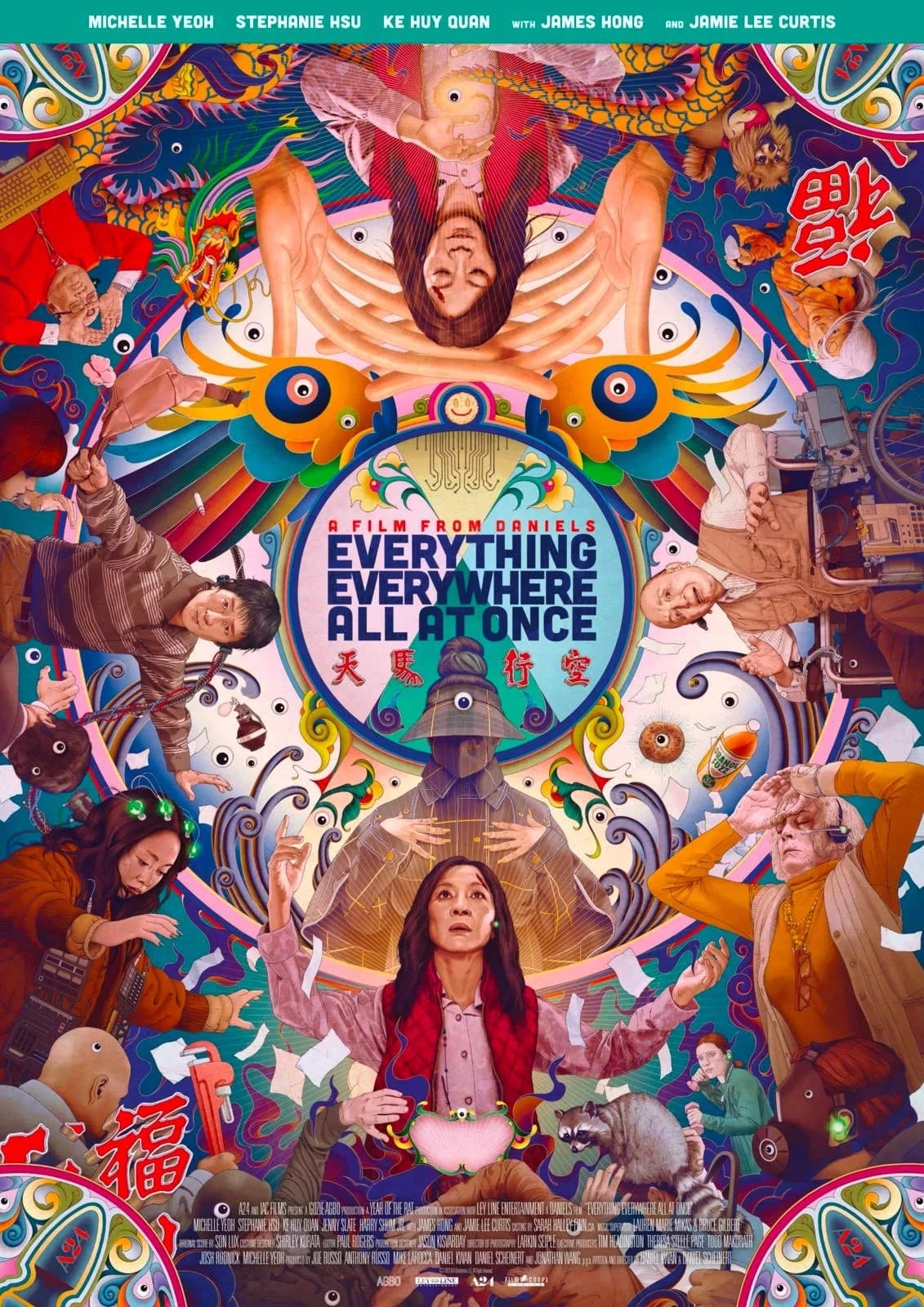The celebrated artist designed posters for three films that have become major Oscar frontrunners for the 2023 Academy Awards

Renowned artist James Jean (BFA 2001 Illustration) seems to rarely skip a year without creating a movie poster for some popular film that has entered the cultural zeitgeist. In recent years, he designed the poster for Blade Runner 2049, mother! and Guillermo del Toro's 2018 Oscar-winning Best Picture, The Shape Of Water.
But 2022, leading into 2023, has been a banner year for this part of Jean’s professional work. Jean designed the poster for three key 2022 movies, all of them either frontrunners or major contenders in this year’s Academy Award race. The first entry already named one of the Best Posters of 2022 by many film outlets, including Indiewire and Collider, is the Daniels-directed sci-fi/wuxia/family drama Everything Everywhere All at Once, nominated for Best Picture and earning itself 11 Oscars nods in total—the most nominated of any film in 2023.
Next up is a collaboration again with the aforementioned Academy Award-winning Mexican filmmaker Guillermo del Toro and his critically acclaimed animated movie, Guillermo del Toro's Pinocchio, favored to win the Best Animated Feature Oscar prize.
Finally, late last year, Jean debuted the newest trailer for Darren Aronofsky’s The Whale, touted as the big comeback film for Brendan Fraser, who is also the oddsmaker's choice to win the Best Actor in a Leading Performance Academy Award. With the Oscar nominations still fresh in the minds of many, we spoke to Jean briefly over email about his movie poster designs, his collaborators and how these creative relationships came to be.

James Jean’s poster design for Guillermo del Toro's Pinocchio animated movie.
You have an existing relationship with Guillermo del Toro. How did that influence the work for Pinocchio, and how did the film itself influence the poster?
Guillermo told me about his inspiration behind Pinocchio, which involved his own relationship with his father, and that was the impetus for the poster. With The Shape of Water, Guillermo actually drew a very simple sketch on note paper that resembled a Ying Yang symbol, which inspired how the figures in my poster were intertwined. The stop-motion animation of Pinocchio influenced the development of the print version of the poster, which involved shallow relief sculpting to create the sense of a real physical puppet.
The Whale is a challenging film; how did that collaboration come about, and how did the film affect the work you did for it?
I've worked with Darren Aronofsky since [2006’s] The Fountain. He created pieces for art shows he curated for The Fountain and Noah, but it wasn't until mother! that he asked me to create an official poster. Darren's films are quite challenging, and The Whale is no exception. I incorporated some influences from art history to try to evoke a sense of a monumental portrait. Also, seeing Brendan Fraser's comeback story evolve over the past year was quite inspiring, and I hope my poster will memorialize this important part of his career trajectory.

James Jean’s poster design for the Daniels-directed sci-fi film, Everything Everywhere All at Once, starring Michelle Yeoh.
The poster for Everything Everywhere All at Once, like the movie, is vibrant and maximalist to the hilt. What was your intention with that one?
The initial idea was based on the concept of a high Renaissance ceiling painting, where the perspective radiates outward in all directions. This was a great way to incorporate all the characters and props from the film in a composition that felt cohesive and while also referencing the image of the everything bagel from the film. I had been a fan of the Daniels since their video for “Turn Down for What,” so it was amazing to be able to contribute to a film that also resonated with my own background as the child of immigrant parents from Taiwan.
What is your process for film poster design, generally?
With Guillermo and Darren, I worked with both of them directly on the posters. Usually, it begins with a screening of the film or reading of the script. Sometimes the film is in very rough shape and the edit needs work and the VFX is missing. Then we’ll have a brief discussion about initial ideas and inspirations. I’ll submit one sketch for approval, and once that is approved, I’ll begin the final piece. Usually, it takes three to four weeks to complete. My film posters tend to require a lot of reference and research, and the compositions are more elaborate than my usual work.
You always have lots of things in the works; what’s next outside of film-related work?
My current museum exhibition at the Modern Art Museum in Shanghai will be wrapping up in a month or so, but the show will travel to Chengdu in the spring. I’ve also been working on constructing a giant stained-glass dome with Judson Studios, and after a few years of engineering and extensive research and development, we hope to finish it this year.

